17.3 Perceptual Organization
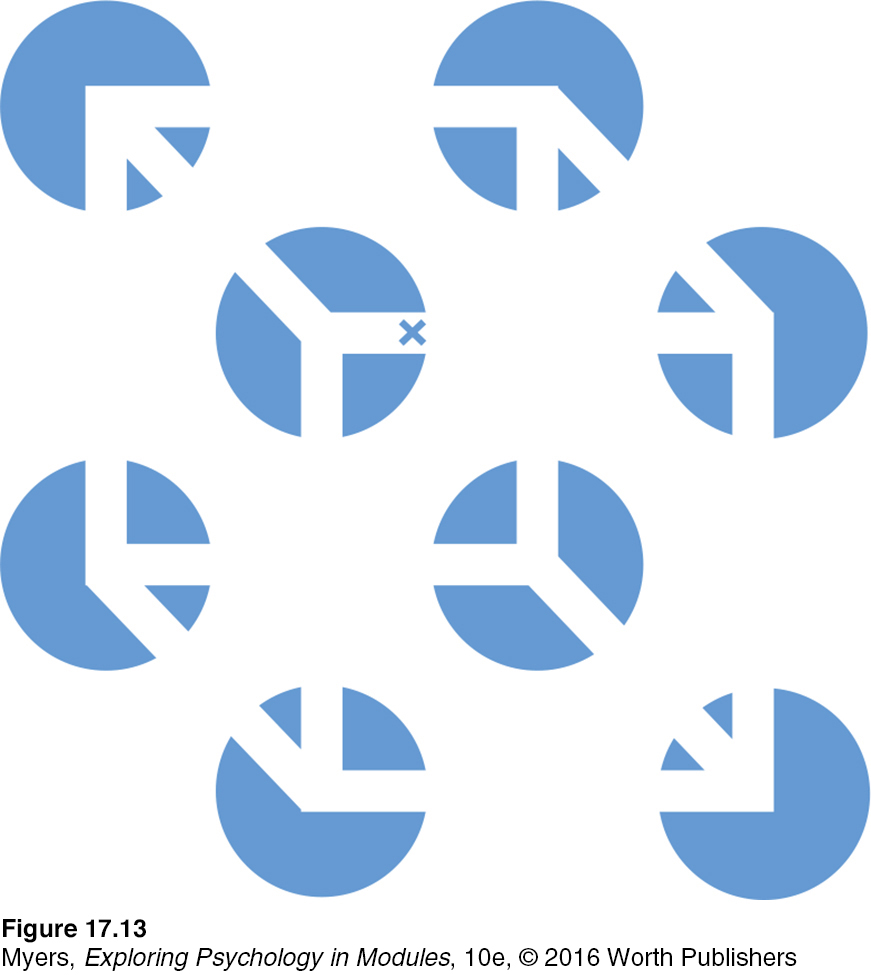
Figure 6.24: FIGURE 17.13 A Necker cube What do you see: circles with white lines, or a cube? If you stare at the cube, you may notice that it reverses location, moving the tiny X in the center from the front edge to the back. At times, the cube may seem to float forward, with circles behind it. At other times, the circles may become holes through which the cube appears, as though it were floating behind them. There is far more to perception than meets the eye. (From Bradley et al., 1976.)
17-6 How did the Gestalt psychologists understand perceptual organization, and how do figure-ground and grouping principles contribute to our perceptions?
It’s one thing to understand how we see colors and shapes. But how do we organize and interpret those sights so that they become meaningful perceptions—a rose in bloom, a familiar face, a sunset?
gestalt an organized whole. Gestalt psychologists emphasized our tendency to integrate pieces of information into meaningful wholes.
Early in the twentieth century, a group of German psychologists noticed that when given a cluster of sensations, people tend to organize them into a gestalt, a German word meaning a “form” or a “whole.” As we look straight ahead, we cannot separate the perceived scene into our left and right fields of view. It is, at every moment, one whole, seamless scene. Our conscious perception is an integrated whole.
Consider FIGURE 17.13. Note that the individual elements of this figure, called a Necker cube, are really nothing but eight blue circles, each containing three converging white lines. When we view these elements all together, however, we see a cube that sometimes reverses direction. This phenomenon nicely illustrates a favorite saying of Gestalt psychologists: In perception, the whole may exceed the sum of its parts.
Over the years, the Gestalt psychologists demonstrated many principles we use to organize our sensations into perceptions (Wagemans et al., 2012a, b). Underlying all of them is a fundamental truth: Our brain does more than register information about the world. Perception is not just opening a shutter and letting a picture print itself on the brain. We filter incoming information and construct perceptions. Mind matters.
Form Perception
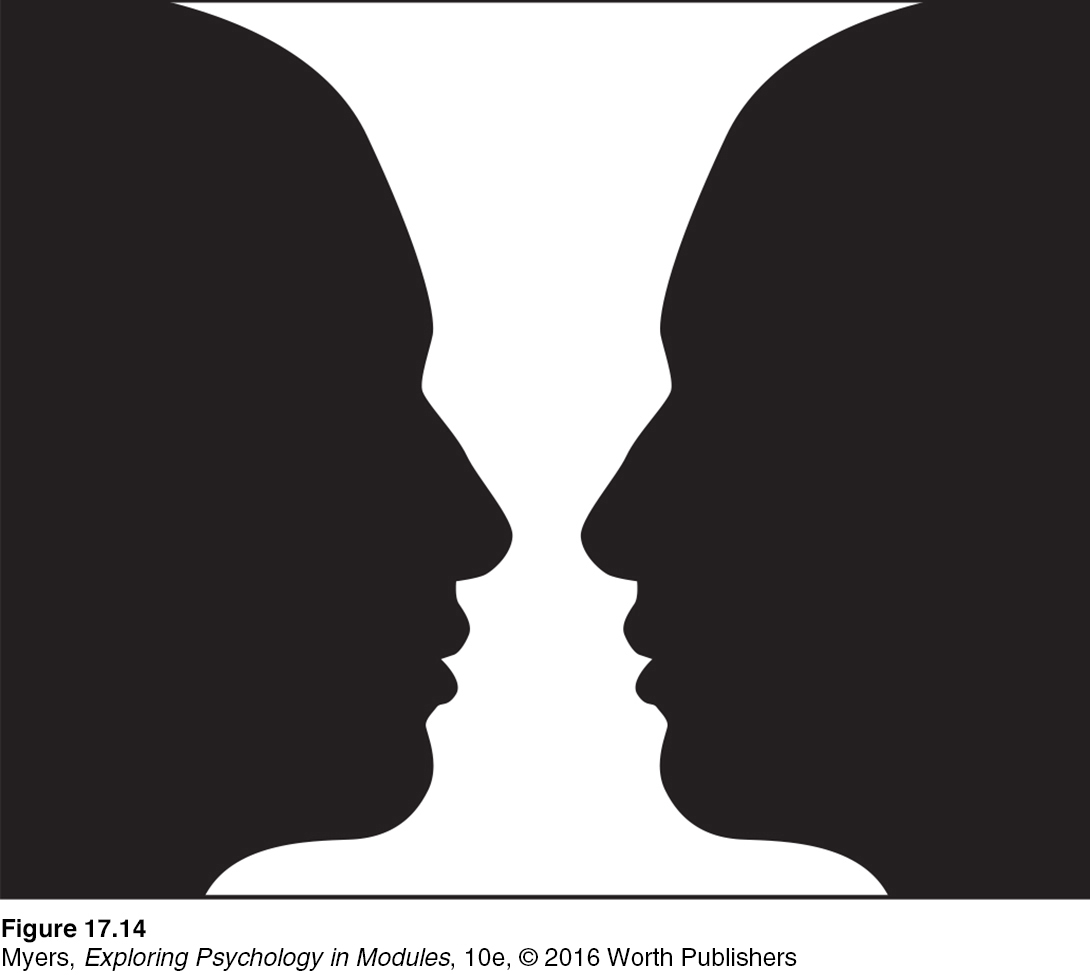
Figure 6.25: FIGURE 17.14 Reversible figure and ground
Imagine designing a video-computer system that, like your eye-brain system, can recognize faces at a glance. What abilities would it need?
figure-ground the organization of the visual field into objects (the figures) that stand out from their surroundings (the ground).
FIGURE AND GROUND To start with, the system would need to separate faces from their backgrounds. Likewise, in our eye-brain system, our first perceptual task is to perceive any object (the figure) as distinct from its surroundings (the ground). As you hear voices at a party, the one you attend to becomes the figure; all others are part of the ground. As you read, the words are the figure; the white space is the ground. Sometimes the same stimulus can trigger more than one perception. In FIGURE 17.14, the figure-ground relationship continually reverses—but we always organize the stimulus into a figure seen against a ground.
grouping the perceptual tendency to organize stimuli into coherent groups.
GROUPING Having discriminated figure from ground, we (and our video-computer system) must also organize the figure into a meaningful form. We process some basic features of a scene—such as color, movement, and light-dark contrast—instantly and automatically (Treisman, 1987). Our minds bring order and form to stimuli by following certain rules for grouping, also identified by the Gestalt psychologists. These rules, which we apply even as infants and even in our touch perceptions, illustrate how the perceived whole differs from the sum of its parts (Gallace & Spence, 2011; Quinn et al., 2002; Rock & Palmer, 1990). Three examples:
Proximity We group nearby figures together. We see not six separate lines, but three sets of two lines.
Continuity We perceive smooth, continuous patterns rather than discontinuous ones. This pattern could be a series of alternating semicircles, but we perceive it as two continuous lines—one wavy, one straight.
Closure We fill in gaps to create a complete, whole object. Thus we assume that the circles on the left are complete but partially blocked by the (illusory) triangle. Add nothing more than little line segments to close off the circles and your brain stops constructing a triangle.
Such principles usually help us construct reality. Sometimes, however, they lead us astray, as when we look at the doghouse in FIGURE 17.15.
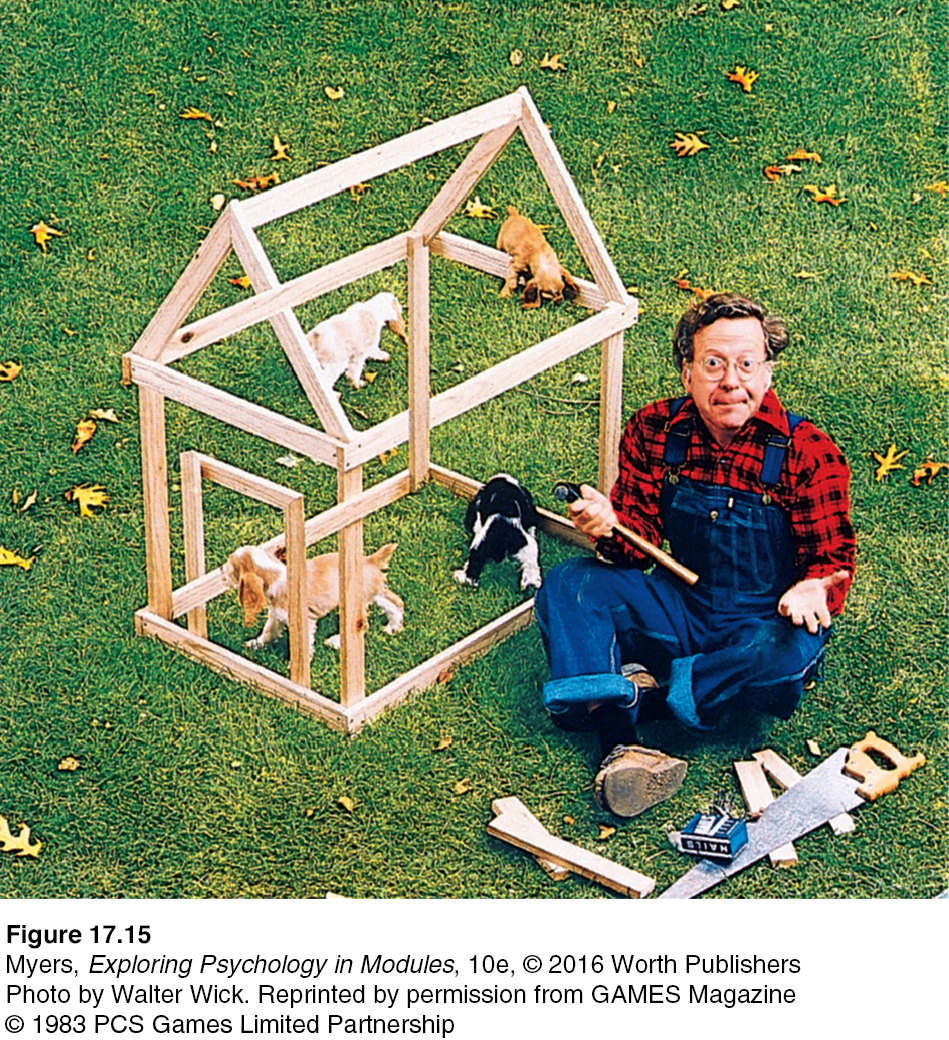
Figure 6.26: FIGURE 17.15 Grouping principles What’s the secret to this impossible doghouse? You probably perceive this doghouse as a gestalt—a whole (though impossible) structure. Actually, your brain imposes this sense of wholeness on the picture. As FIGURE 17.19 shows, Gestalt grouping principles such as closure and continuity are at work here.
Photo by Walter Wick. Reprinted by permission from GAMES Magazine © 1983 PCS Games Limited Partnership
RETRIEVE IT
Question
In terms of perception, a band's lead singer would be considered H5JoE51gPYMaoBWT
(figure/ground), and the other musicians would be considered gTUaZ+uBmWKbVImS
(figure/ground).
Question
P54W7rZkOf4KKHRXue70DXOzq0ZUfV1wFdEAphCHGTC+7TDAR+gh2lzybJO55E0ACogSkrpvWL1ImwyIC1XWebud5j4GwdBWchywqxkcjaXgmO9USJC2FUUCA+4vy87B
ANSWER: Gestalt psychologists used this saying to describe our perceptual tendency to organize clusters of sensations into meaningful forms or coherent groups.
Depth Perception
17-7 How do we use binocular and monocular cues to perceive the world in three dimensions?
depth perception the ability to see objects in three dimensions although the images that strike the retina are two-dimensional; allows us to judge distance.
visual cliff a laboratory device for testing depth perception in infants and young animals.
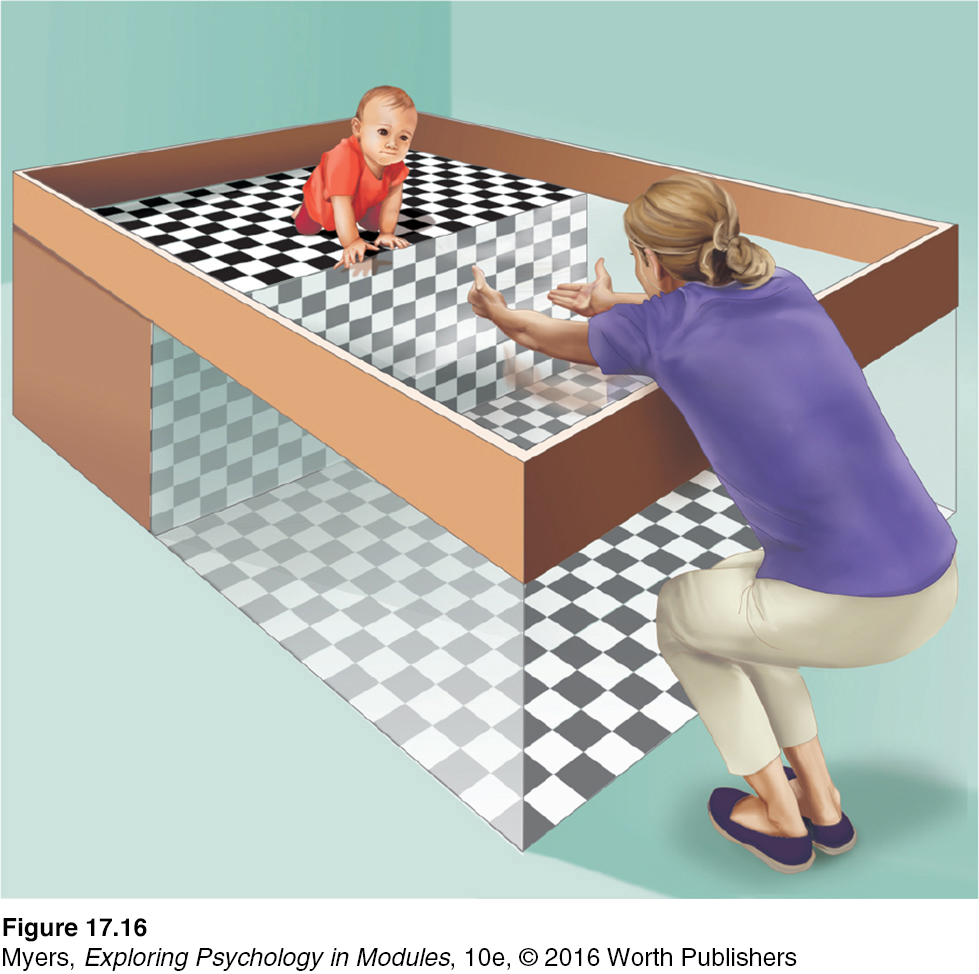
Figure 6.27: FIGURE 17.16 Visual cliff Eleanor Gibson and Richard Walk devised this miniature cliff with a glass-covered drop-off to determine whether crawling infants and newborn animals can perceive depth. Even when coaxed, infants are reluctant to venture onto the glass over the cliff.
From the two-dimensional images falling on our retinas, we somehow organize three-dimensional perceptions. Depth perception enables us to estimate an object’s distance from us. At a glance, we can estimate the distance of an oncoming car or the height of a house. Depth perception is partly innate, as Eleanor Gibson and Richard Walk (1960) discovered using a model of a cliff with a drop-off area (which was covered by sturdy glass). Gibson’s inspiration for these visual cliff experiments occurred while she was picnicking on the rim of the Grand Canyon. She wondered: Would a toddler peering over the rim perceive the dangerous drop-off and draw back?
Back in their Cornell University laboratory, Gibson and Walk placed 6- to 14-month-old infants on the edge of a safe canyon and had the infants’ mothers coax them to crawl out onto the glass (FIGURE 17.16). Most infants refused to do so, indicating that they could perceive depth.
Had they learned to perceive depth? Mobile, newborn animals, such as kittens, come prepared to see depth—and will not venture across the visual cliff. Learning seems also to be part of the human story, because crawling, no matter when it begins, seems to increase infants’ wariness of heights (Adolph et al., 2014; Campos et al., 1992).
How do we do it? How do we transform two differing two-dimensional retinal images into a single three-dimensional perception?
binocular cues depth cues, such as retinal disparity, that depend on the use of two eyes.
BINOCULAR CUES Try this: With both eyes open, hold two pens or pencils in front of you and touch their tips together. Now do so with one eye closed. With one eye, the task becomes noticeably more difficult, demonstrating the importance of binocular cues in judging the distance of nearby objects. Two eyes are better than one.
retinal disparity a binocular cue for perceiving depth: By comparing images from the retinas in the two eyes, the brain computes distance—the greater the disparity (difference) between the two images, the closer the object.
Because your eyes are about 2½ inches apart, your retinas receive slightly different images of the world. By comparing these two images, your brain can judge how close an object is to you. The greater the retinal disparity, or difference between the two images, the closer the object. Try it. Hold your two index fingers, with the tips about half an inch apart, directly in front of your nose, and your retinas will receive quite different views. If you close one eye and then the other, you can see the difference. (Bring your fingers close and you can create a finger sausage, as in FIGURE 17.17.) At a greater distance—say, when you hold your fingers at arm’s length—the disparity is smaller.
We could easily build this feature into our video-computer system. Moviemakers can simulate or exaggerate retinal disparity by filming a scene with two cameras placed a few inches apart. Viewers then wear glasses that allow the left eye to see only the image from the left camera, and the right eye to see only the image from the right camera. The resulting effect, as 3-D movie fans know, mimics or exaggerates normal retinal disparity. Similarly, twin cameras in airplanes can take photos of terrain for integration into 3-D maps.

Figure 6.28: FIGURE 17.17 The floating finger sausage Hold your two index fingers about 5 inches in front of your eyes, with their tips half an inch apart. Now look beyond them and note the weird result. Move your fingers out farther and the retinal disparity—and the finger sausage—will shrink.
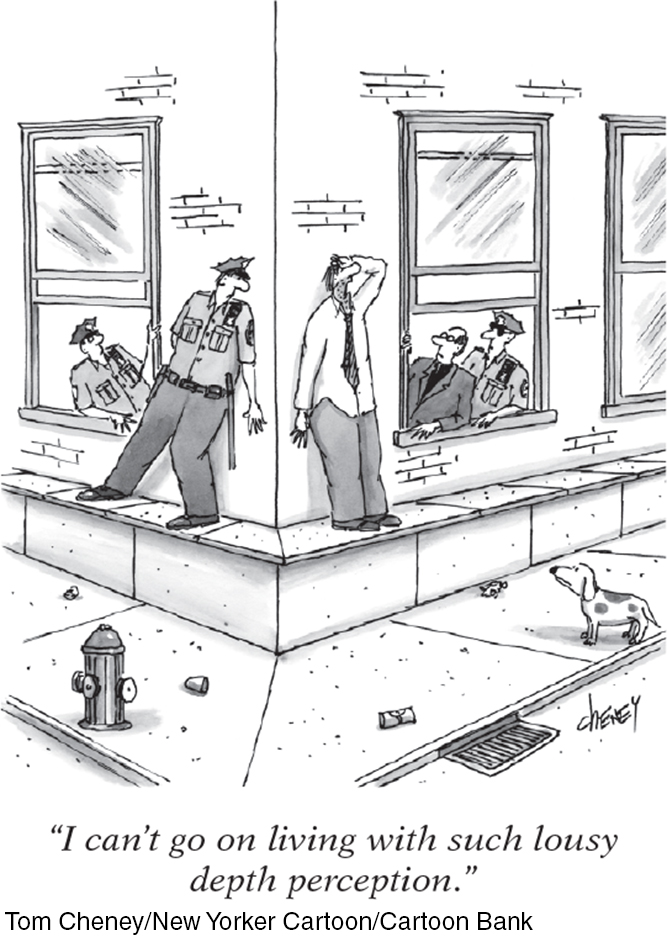
Tom Cheney/New Yorker Cartoon/Cartoon Bank
monocular cues depth cues, such as interposition and linear perspective, available to either eye alone.
MONOCULAR CUES How do we judge whether a person is 10 or 100 meters away? Retinal disparity won’t help us here, because there won’t be much difference between the images cast on our right and left retinas. At such distances, we depend on monocular cues (depth cues available to each eye separately). See FIGURE 17.18a, b, c, d, e, and f for some examples.
 For animated demonstrations and explanations of these cues, visit LaunchPad’s Concept Practice: Depth Cues.
For animated demonstrations and explanations of these cues, visit LaunchPad’s Concept Practice: Depth Cues.
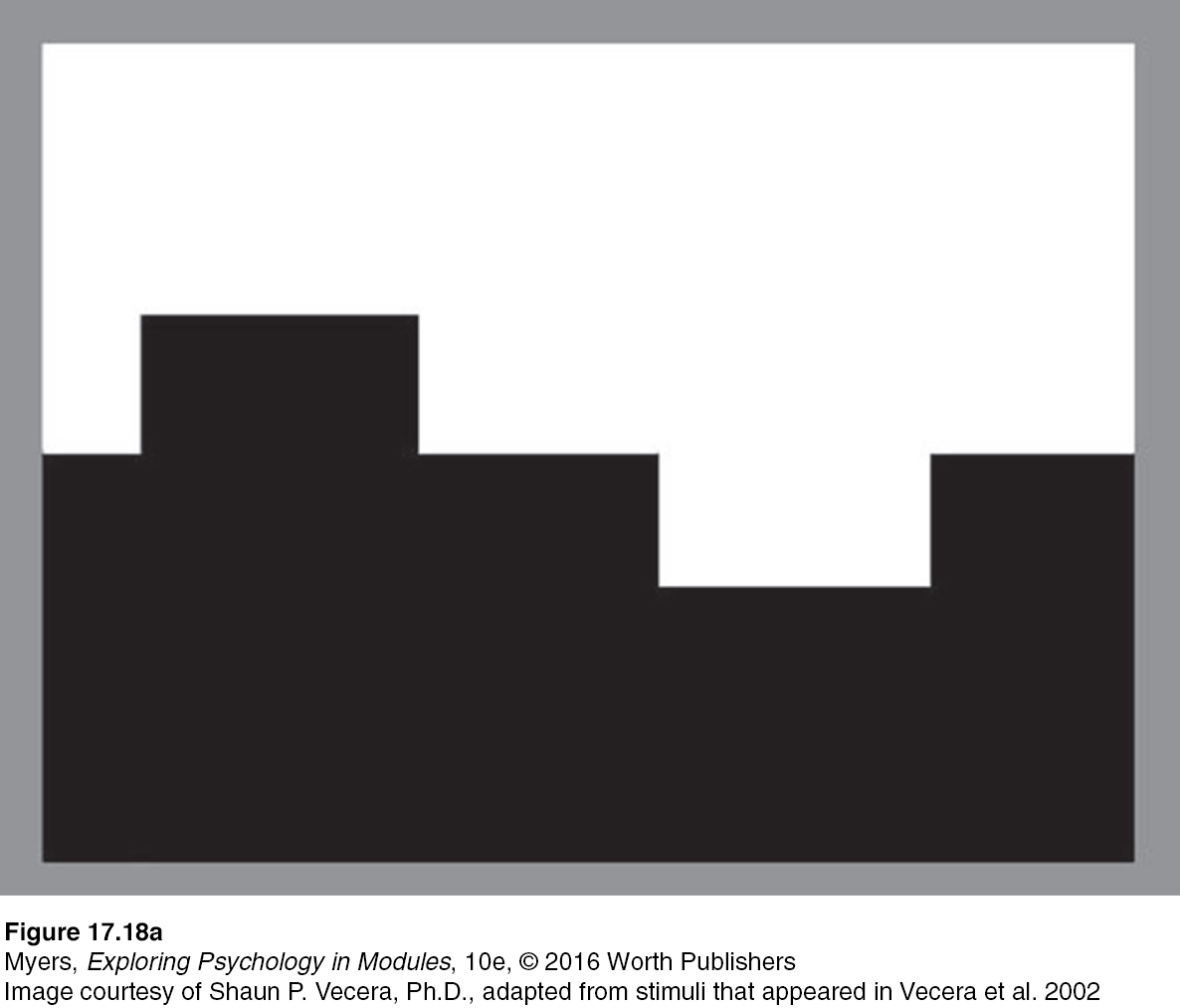
Figure 6.29: FIGURE 17.18a Relative height We perceive objects higher in our field of vision as farther away. Because we assume the lower part of a figure-ground illustration is closer, we perceive it as figure (Vecera et al., 2002). Invert this illustration and the black will become ground, like a night sky.
Image courtesy of Shaun P. Vecera, Ph.D., adapted from stimuli that appeared in Vecera et al. 2002
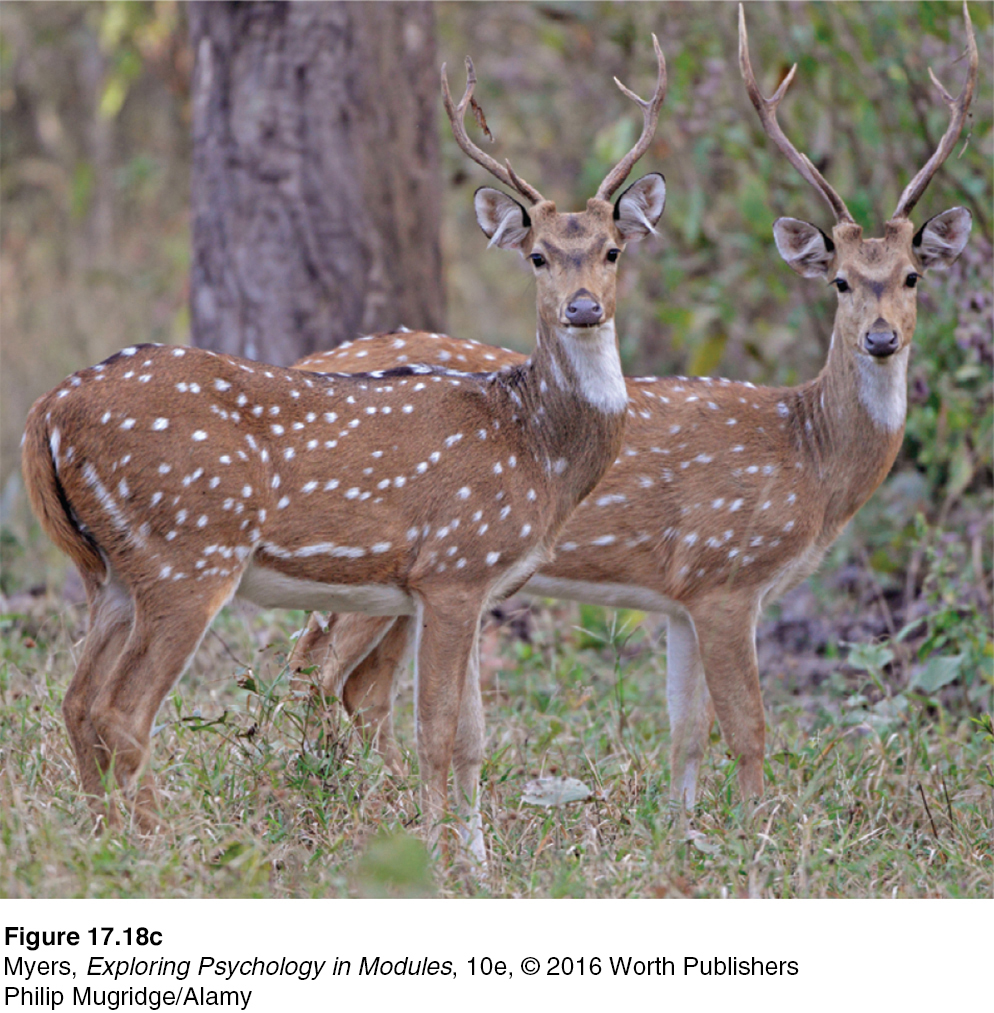
Figure 6.30: FIGURE 17.18c Interposition If one object partially blocks our view of another, we perceive it as closer.
Philip Mugridge/Alamy
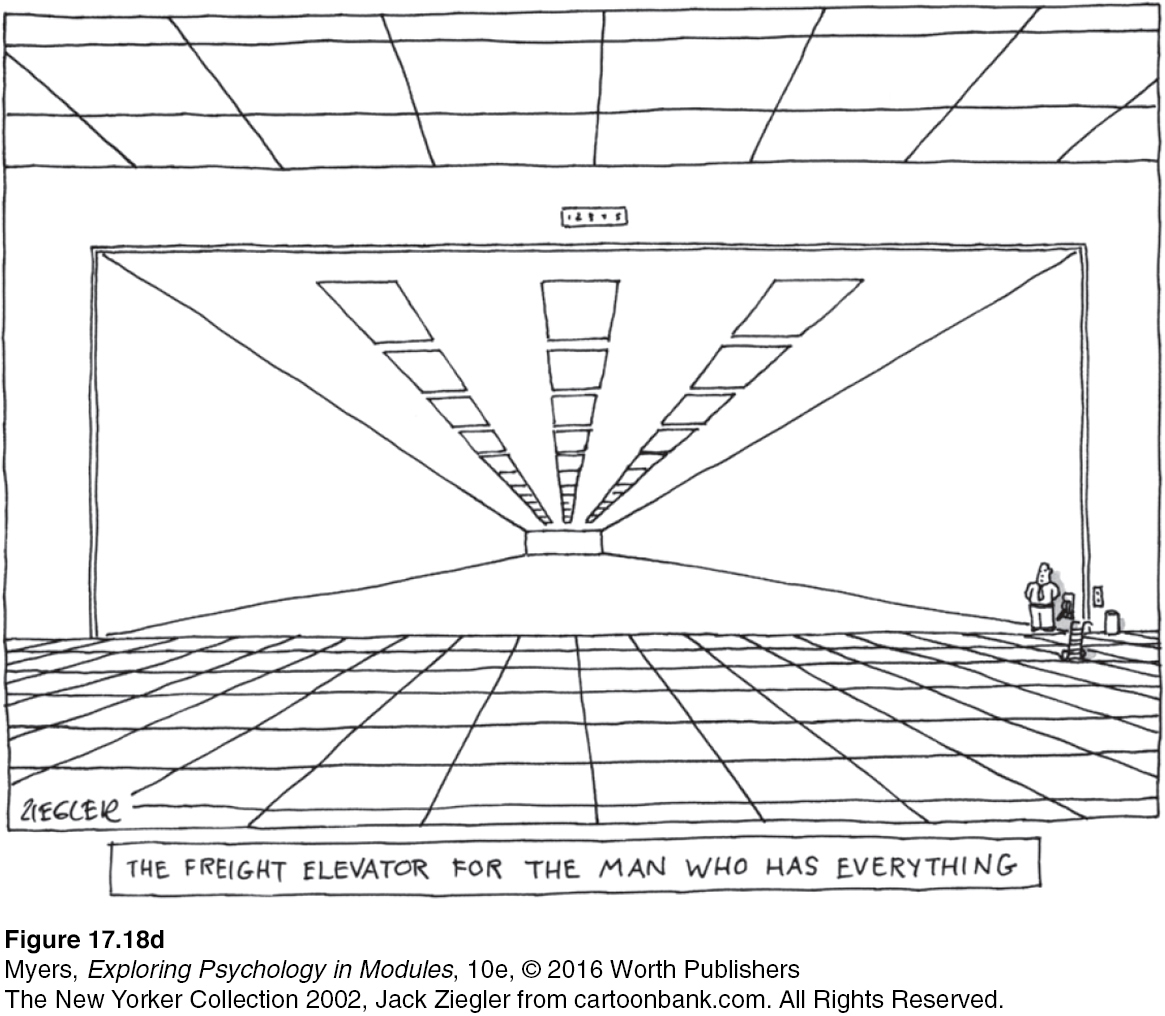
Figure 6.31: FIGURE 17.18d Linear perspective Parallel lines appear to meet in the distance. The sharper the angle of convergence, the greater the perceived distance.
The New Yorker Collection 2002, Jack Ziegler from cartoonbank.com. All Rights Reserved.

Figure 6.32: FIGURE 17.18b Relative size If we assume two objects are similar in size, most people perceive the one that casts the smaller retinal image as farther away.
BIZARRO © 2014 Dan Piraro, Dist. By King Features
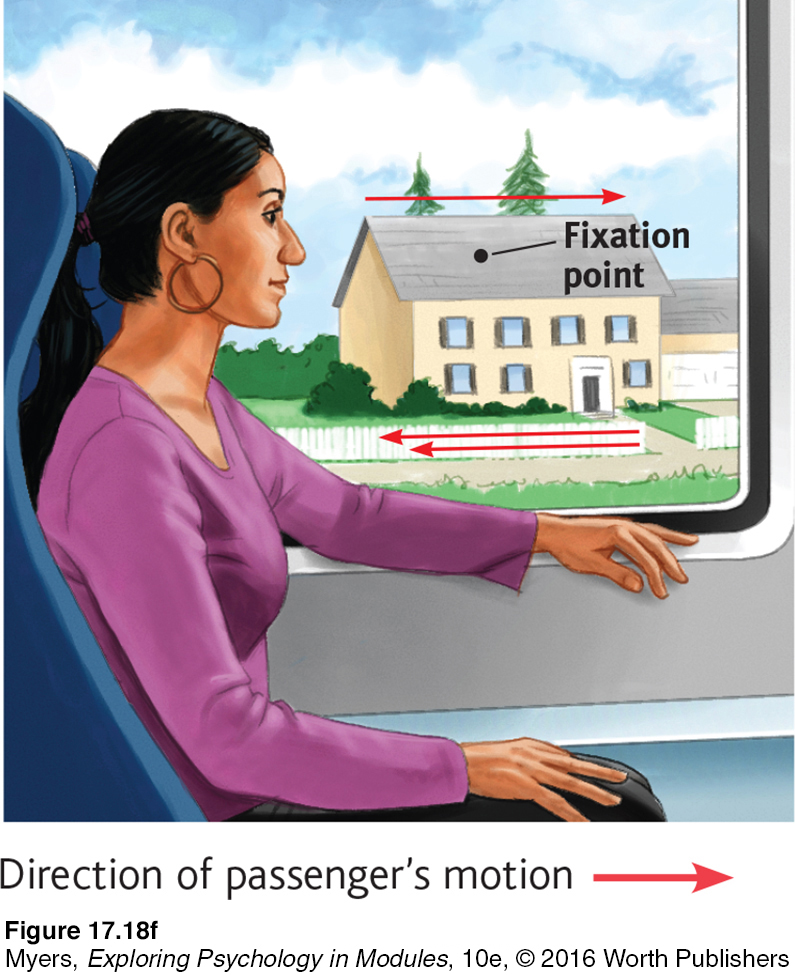
Figure 6.33: FIGURE 17.18f Relative motion As we move, objects that are actually stable may appear to move. If while riding on a bus you fix your gaze on some point—say, a house—the objects beyond the fixation point will appear to move with you. Objects in front of the point will appear to move backward. The farther an object is from the fixation point, the faster it will seem to move.
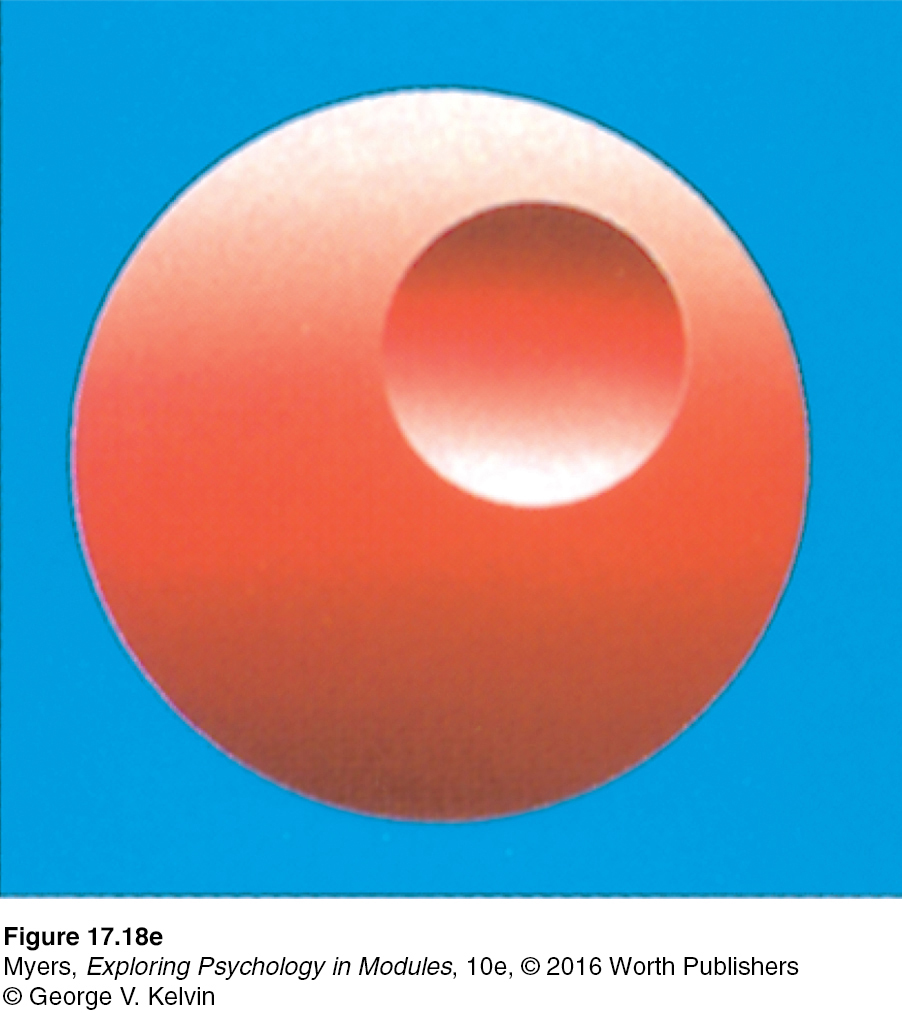
Figure 6.34: FIGURE 17.18e Light and shadow Shading produces a sense of depth consistent with our assumption that light comes from above. If you invert this illustration, the hollow will become a hill.
© George V. Kelvin
RETRIEVE IT
Question
AGfeC5ShKlbu5Bc46pDnt/vYZhJoXTv3Q0DyHv3wkeiQSDQATB1YJQ==
ANSWER: We are normally able to perceive depth thanks to (1) binocular cues (which are based on our retinal disparity), and (2) monocular cues (which include relative height, relative size, interposition, linear perspective, light and shadow, and relative motion).
Perceptual Constancy
17-8 How do perceptual constancies help us construct meaningful perceptions?
perceptual constancy perceiving objects as unchanging (having consistent color, brightness, shape, and size) even as illumination and retinal images change.
So far, we have noted that our video-computer system must perceive objects as we do—as having a distinct form and location. Its next task is to recognize objects without being deceived by changes in their color, brightness, shape, or size—a top-down process called perceptual constancy. Regardless of the viewing angle, distance, and illumination, we can identify people and things in less time than it takes to draw a breath, a feat that challenges even advanced computers and has intrigued researchers for decades. This would be a monumental challenge for a video-computer system.
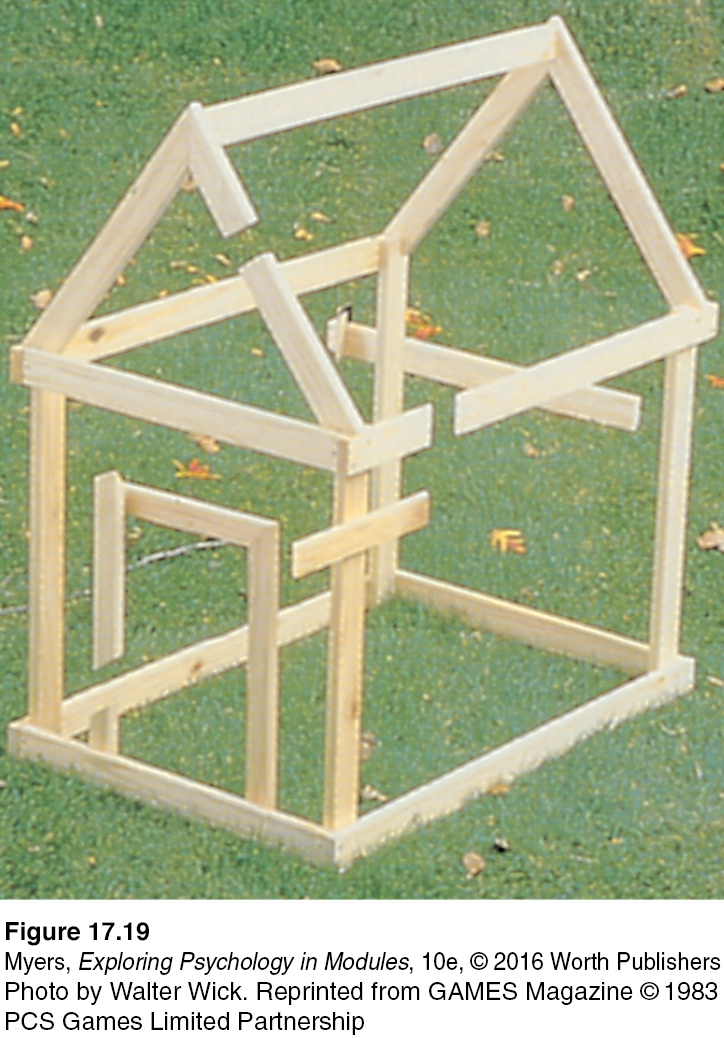
Figure 6.35: FIGURE 17.19 The solution Another view of the impossible doghouse in FIGURE 17.15 reveals the secrets of this illusion. From the photo angle in FIGURE 17.15, the grouping principle of closure leads us to perceive the boards as continuous.
Photo by Walter Wick. Reprinted from GAMES Magazine ©1983 PCS Games Limited Partnership
color constancy perceiving familiar objects as having consistent color, even if changing illumination alters the wavelengths reflected by the objects.
COLOR AND BRIGHTNESS CONSTANCIES Our experience of color depends on an object’s context. This would be clear if you viewed an isolated tomato through a paper tube over the course of a day. The tomato’s color would seem to change as the light—and thus the wavelengths reflected from its surface—changed. But if you viewed that tomato as one item in a salad bowl, its color would remain roughly constant as the lighting shifted. This perception of consistent color is known as color constancy.
Though we take color constancy for granted, this ability is truly remarkable. A blue poker chip under indoor lighting reflects wavelengths that match those reflected by a sunlit gold chip (Jameson, 1985). Yet bring a goldfinch indoors and it won’t look like a bluebird. The color is not in the bird’s feathers. We see color thanks to our brain’s computations of the light reflected by an object relative to the objects surrounding it. FIGURE 17.20 dramatically illustrates the ability of a blue object to appear very different in three different contexts. Yet we have no trouble seeing these disks as blue. Nor does knowing the truth—that these disks are identically colored—diminish our perception that they are quite different. Because we construct our perceptions, we can simultaneously accept alternative objective and subjective realities.
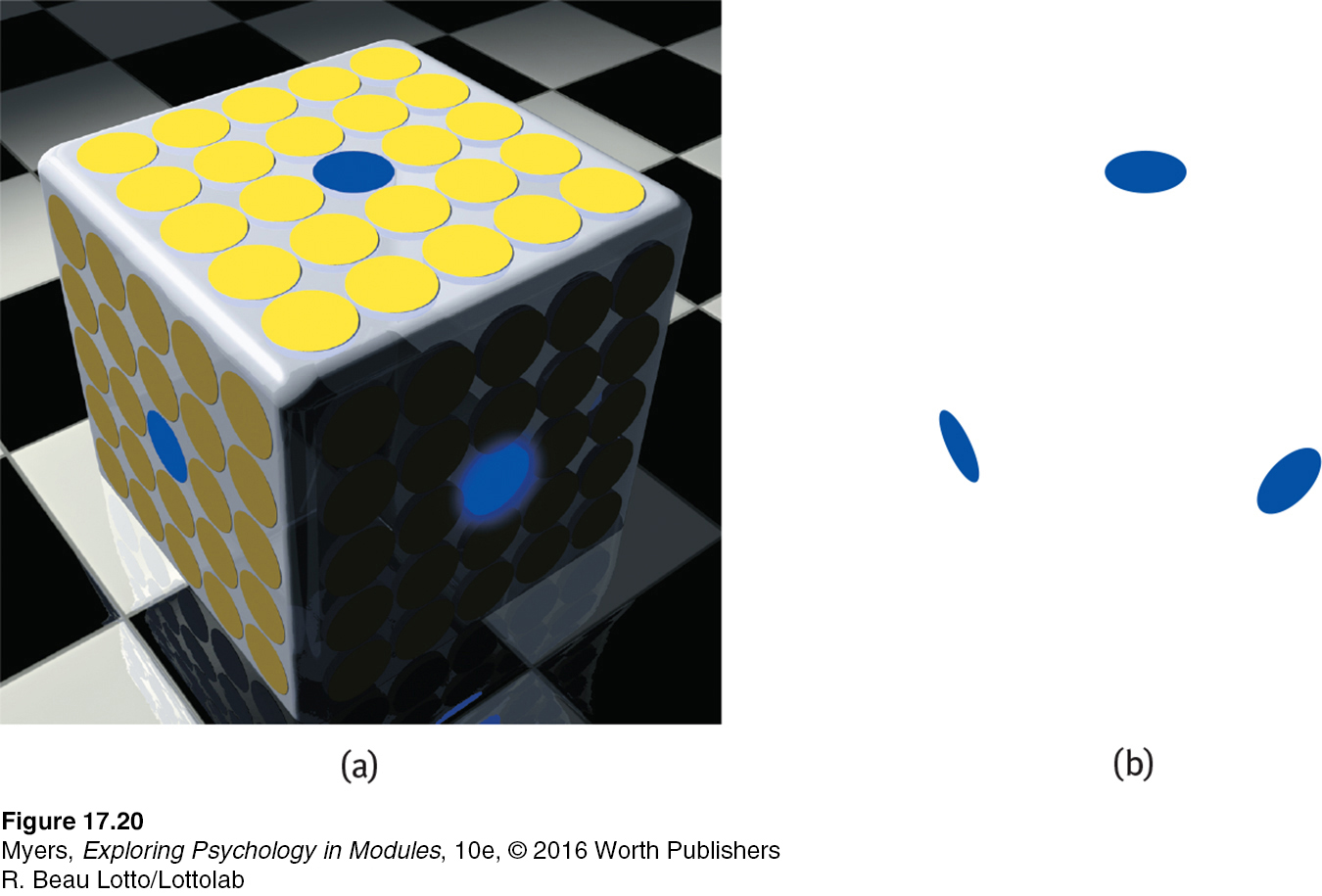
FIGURE 17.20 Color depends on context (a) Believe it or not, these three blue disks are identical in color. (b) Remove the surrounding context and see what results.
R. Beau Lotto/Lottolab
“From there to here, from here to there, funny things are everywhere.”
Dr. Seuss, One Fish, Two Fish, Red Fish, Blue Fish, 1960
Brightness constancy (also called lightness constancy) similarly depends on context. We perceive an object as having a constant brightness even as its illumination varies. This perception of constancy depends on relative luminance—the amount of light an object reflects relative to its surroundings (FIGURE 17.21 below). White paper reflects 90 percent of the light falling on it; black paper, only 10 percent. Although a black paper viewed in sunlight may reflect 100 times more light than does a white paper viewed indoors, it will still look black (McBurney & Collings, 1984). But if you view sunlit black paper through a narrow tube so nothing else is visible, it may look gray, because in bright sunshine it reflects a fair amount of light. View it without the tube and it is again black, because it reflects much less light than the objects around it.
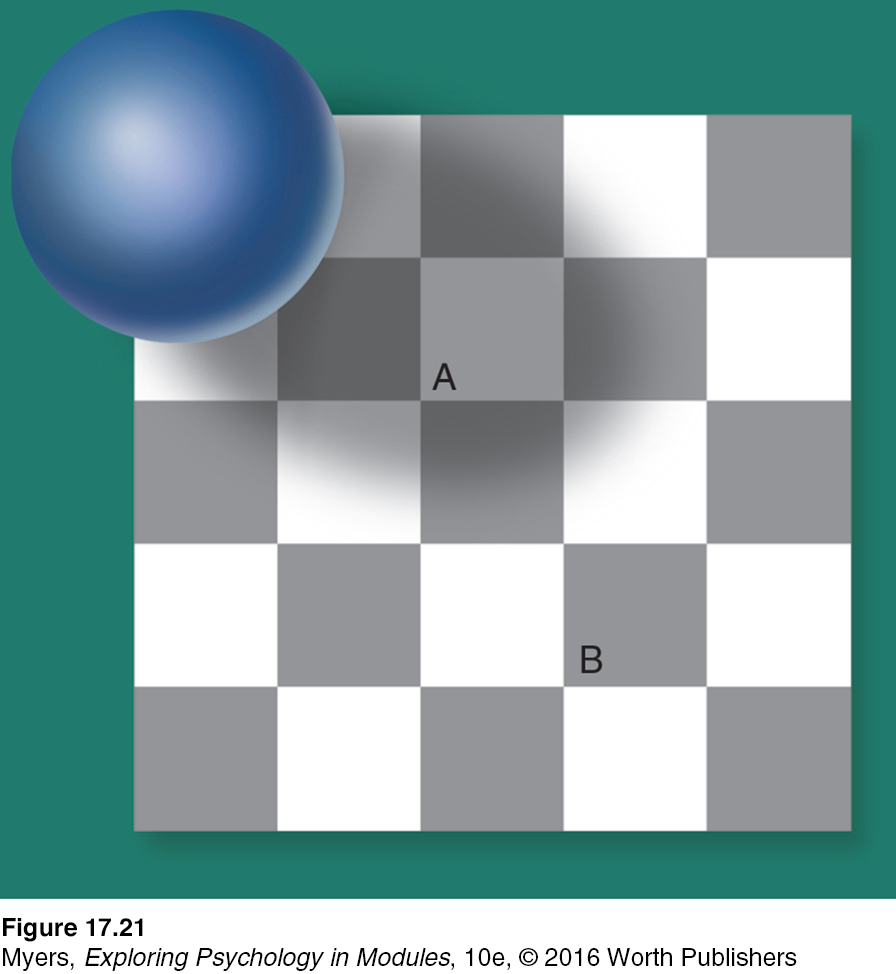
Figure 6.36: FIGURE 17.21 Relative luminance Because of its surrounding context, we perceive Square A as lighter than Square B. But believe it or not, they are identical. To channel comedian Richard Pryor, “Who you gonna believe: me, or your lying eyes?” If you believe your lying eyes—actually, your lying brain—you can photocopy (or screen-capture and print) the illustration, then cut out the squares and compare them.
This principle—that we perceive objects not in isolation but in their environmental context—matters to artists, interior decorators, and clothing designers. Our perception of the color and brightness of a wall or of a streak of paint on a canvas is determined not just by the paint in the can but by the surrounding colors. The take-home lesson: Comparisons control our perceptions.
SHAPE AND SIZE CONSTANCIES Sometimes an object whose actual shape cannot change seems to change shape with the angle of our view (FIGURE 17.22). More often, thanks to shape constancy, we perceive the form of familiar objects, such as the door in FIGURE 17.23, as constant even while our retinas receive changing images of them. Our brain manages this feat thanks to visual cortex neurons that rapidly learn to associate different views of an object (Li & DiCarlo, 2008).

Figure 6.37: FIGURE 17.22 Perceiving shape Do the tops of these tables have different dimensions? They appear to. But they are identical. (Measure and see.) With both tables, we adjust our perceptions relative to our viewing angle.
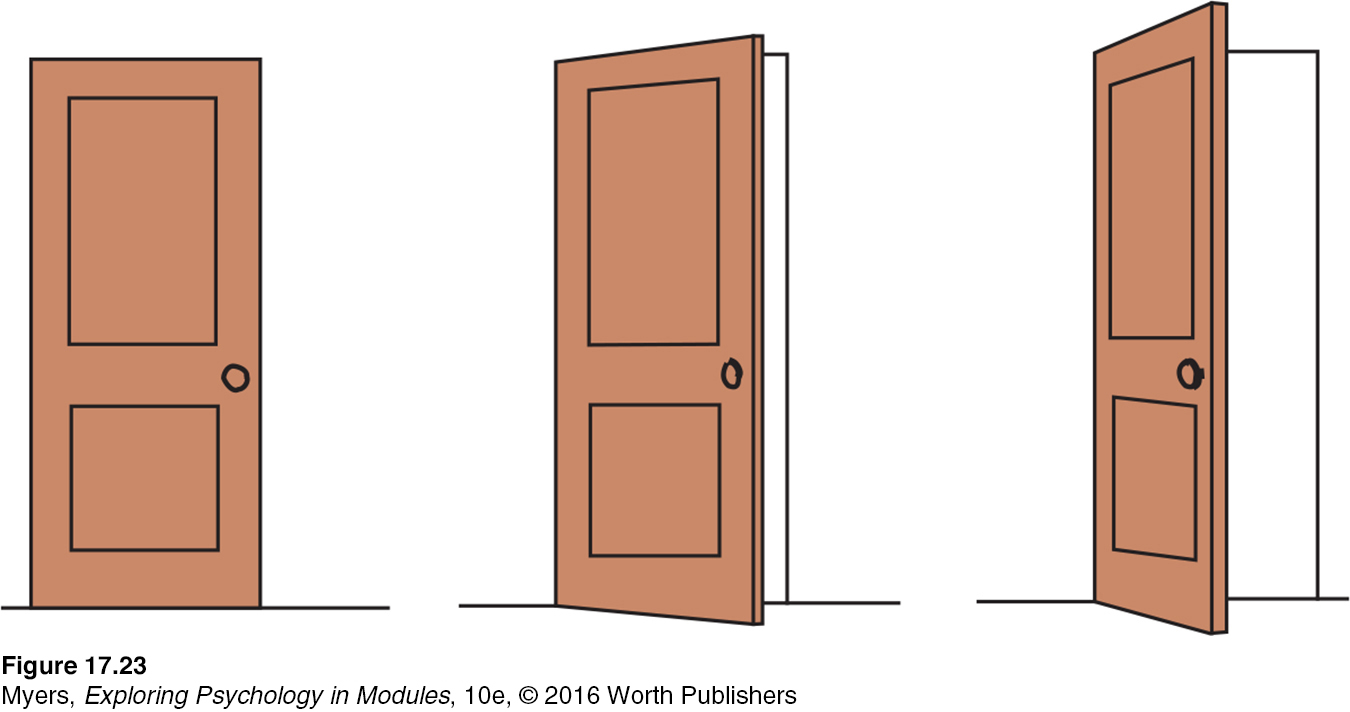
Figure 6.38: FIGURE 17.23 Shape constancy A door casts an increasingly trapezoidal image on our retinas as it opens. Yet we still perceive it as rectangular.
Thanks to size constancy, we perceive objects as having a constant size, even while our distance from them varies. We assume a car is large enough to carry people, even when we see its tiny image from two blocks away. This assumption also illustrates the close connection between perceived distance and perceived size. Perceiving an object’s distance gives us cues to its size. Likewise, knowing its general size—that the object is a car—provides us with cues to its distance.
Even in size-distance judgments, however, we consider an object’s context. This interplay between perceived size and perceived distance helps explain several well-known illusions, including the Moon illusion: The Moon looks up to 50 percent larger when near the horizon than when high in the sky. Can you imagine why?
For at least 22 centuries, scholars have wondered (Hershenson, 1989). One reason is that monocular cues to objects’ distances make the horizon Moon appear farther away. If it’s farther away, our brain assumes, it must be larger than the Moon high in the night sky (Kaufman & Kaufman, 2000). Take away the distance cue, by looking at the horizon Moon through a paper tube, and the object will immediately shrink.
Perceptual illusions reinforce a fundamental lesson: Perception is not merely a projection of the world onto our brain. Rather, our sensations are disassembled into information bits that our brain then reassembles into its own functional model of the external world. During this reassembly process, our assumptions—such as the usual relationship between distance and size—can lead us astray. Our brain constructs our perceptions.
Form perception, depth perception, and perceptual constancies illuminate how we organize our visual experiences. Perceptual organization applies to our other senses, too. Listening to an unfamiliar language, we have trouble hearing where one word stops and the next one begins. Listening to our own language, we automatically hear distinct words. This, too, reflects perceptual organization. But it is more, for we even organize a string of letters—THEDOGATEMEAT—into words that make an intelligible phrase, more likely “The dog ate meat” than “The do gate me at” (McBurney & Collings, 1984). This process involves not only the organization we’ve been discussing, but also interpretation—discerning meaning in what we perceive.







 For animated demonstrations and explanations of these cues, visit LaunchPad’s Concept Practice: Depth Cues.
For animated demonstrations and explanations of these cues, visit LaunchPad’s Concept Practice: Depth Cues.









